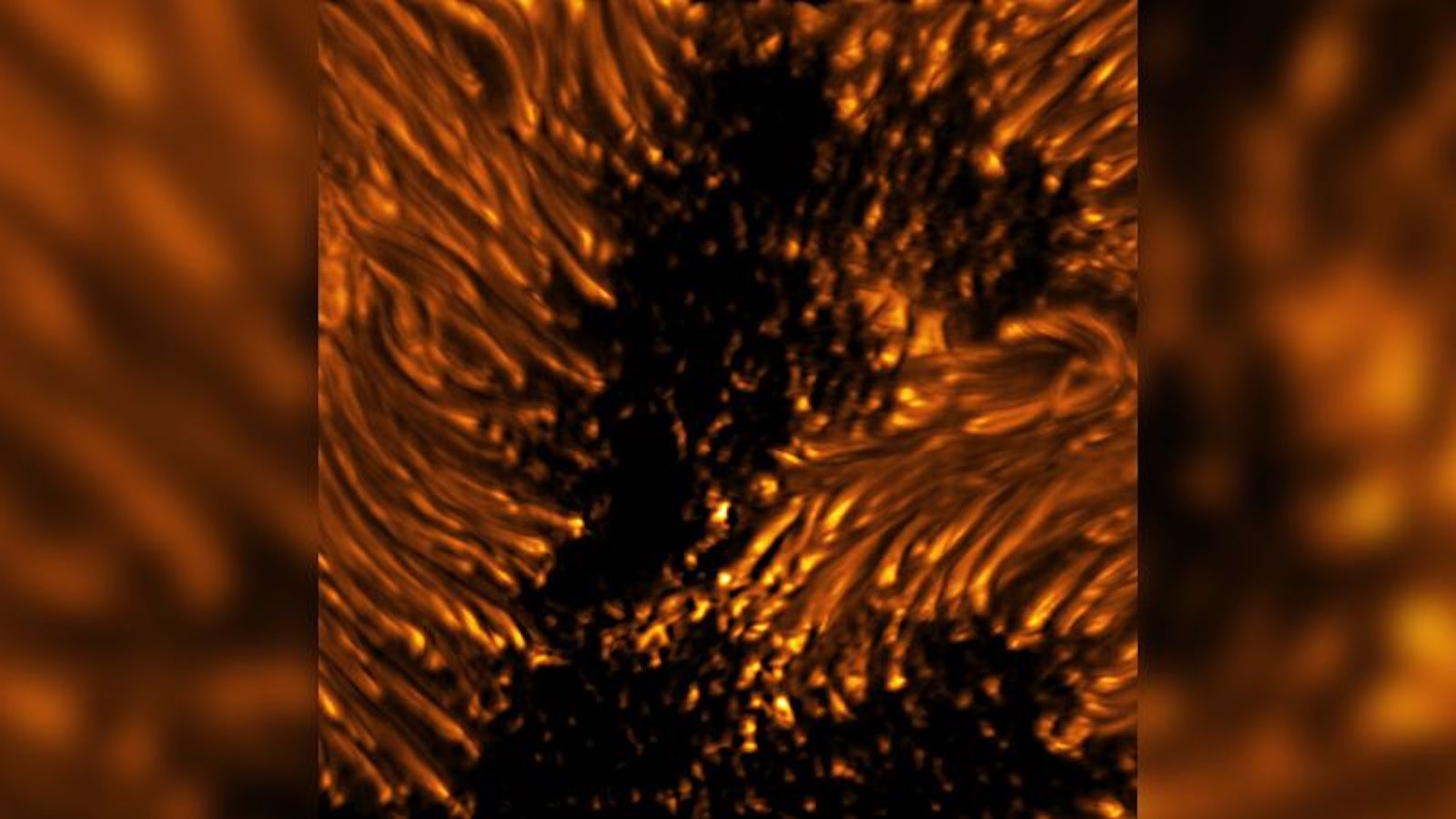NASA reveals how the sounds of the Sun and Earth are heard 0:58
(CNN) -- New images of the Sun's surface captured by a powerful ground-based solar telescope revealed sunspots and other features in unprecedented detail.
The eight images, released on May 19, 2023, were taken with the National Science Foundation's Daniel K. Inouye Solar Telescope, a 4-meter telescope located on the island of Maui in Hawaii.
Although the Sun is becoming more active as the July 2025 solar maximum, the peak of the 11-year solar cycle, approaches, the photos show the quieter aspects of the solar surface.
Sunspots, cold and dark, dot the photosphere, the surface of the Sun where the magnetic field is most intense, and can be the size of Earth or larger. Sunspot clusters are the cause of solar flares and coronal mass ejections, which occur when plasma and part of the magnetic field break off from the Sun's outer atmosphere, or corona, and pass through the solar system.
These energetic bursts from the Sun can affect Earth's satellite communications.
advertising
The sunspot regions shown in the images are a contrast study. The hot, bright plasma flows upward on the surface of the Sun, while the darker, cooler plasma flows downward. In the chromosphere, the atmospheric layer above the surface, threadlike structures reveal the presence of magnetic fields.
Fine, detailed structures can be seen in dark sunspots, including bright spots that exist where the magnetic field is strongest. Bright filaments derived from the magnetic field called penumbral filaments, which carry heat, surround the sunspot.
Dots and filaments glow in and around a sunspot. (Credit: NSF/AURA/NSO)
Another image shows a sunspot that has lost most of its brightest surrounding region, or penumbra, that appears to be decaying. The researchers believe the remaining fragments could be the end point in the evolution of a sunspot, before it disappears.
The telescope captured an image of what scientists believe shows a decaying sunspot. (Credit: NSF/AURA/NSO)
The Inouye Solar Telescope also glimpsed "bridges of light," bright solar features that cut through the darkest region of a sunspot. These complex structures can look different, but scientists believe the light bridges could indicate that a sunspot is about to disappear. Future observations could provide more insights into the formation of light bridges and their significance.
A bridge of light crosses a dark sunspot. (Credit: NSF/AURA/NSO)
The images taken over the past year are among the first observations made with the world's largest and most powerful ground-based solar telescope during its commissioning phase, according to the National Science Foundation. Currently, the telescope is being tuned to reach full operational capability, according to the agency.
Scientists hope the telescope's capabilities will allow them to answer key questions about the Sun, including the origin of solar storms, as well as unravel the complexities of its magnetic field.
The telescope was designed to make continuous measurements of the solar corona's magnetic fields and provide images of the solar atmosphere like never before. Compared to the imaging capabilities of other observatories, Inouye can capture solar features three times smaller.
Solar data from the Inouye Solar Telescope, as well as two space missions called Solar Orbiter and Parker Solar Probe, can help unlock some of the Sun's most enduring mysteries, while providing stunning views of our star in a new light.
Sun
